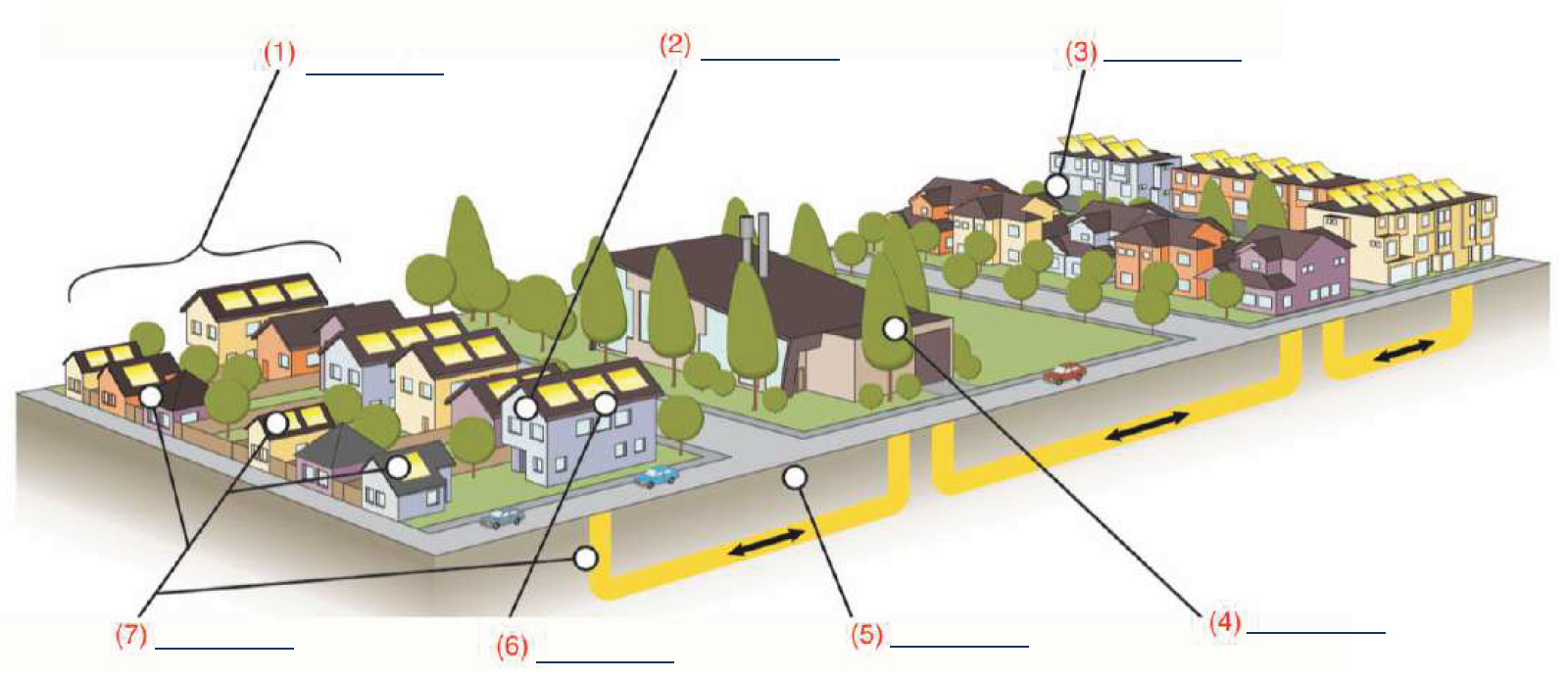Completed and connected community. About 2500 residents are within a 5 minute walk of shops, services and offices in two neighbouhood centres.
City of Vancouver's renewable City Strategy on zero emisson building priorities
1. Expand existing and develop new neighbourhood renewable energy systems
2. Ensure grid supplied electricity is 100% renewable
What is Community Energy?
Community energy refers to multiple energy sources and distribution networks that are shared between various members of a geographic neighborhood, with at least part of the energy generated in the local area.
Redesign your Community
Think about new design possibilities and fill in the blanks with your brilliant ideas about energy use in your neighborhood enhancement (hints are given by arrows pointing to the sketch).

Efficient housing type. Households in duplex, townhouse, and apartment dwellings located near services can reduce household energy costs by about 60% compared to suburb households.
Tree shading. Trees on the east and west side provide cooling effects with summer shade - saving energy for air conditioning; pruning lower branches of deciduous trees to the south will allow the lower winter sun to strike the walls - saving energ for heating.
Pumps and geo-exchange. Heat pumps can take heat from the air or ground and use it to provide space hear or hot water.
Solar energy/ solar water hot system.
Rooftop solar - uses photovoltaic cells to harvest the sun energy and convert that into electricity.
Solar hot water system - solar thermal collectors circulate a fluid which is heated by the sun's radiant energy.
District energy system. Networks of hot and cold water pipes, typically burried underground, that are used to efficiently heat and cool buildings using less energy than if the individual buildings were to each have their own boilers and chillers. See an example in downtown Vancouver here.
Learn more about the animation of climate change and community design here

